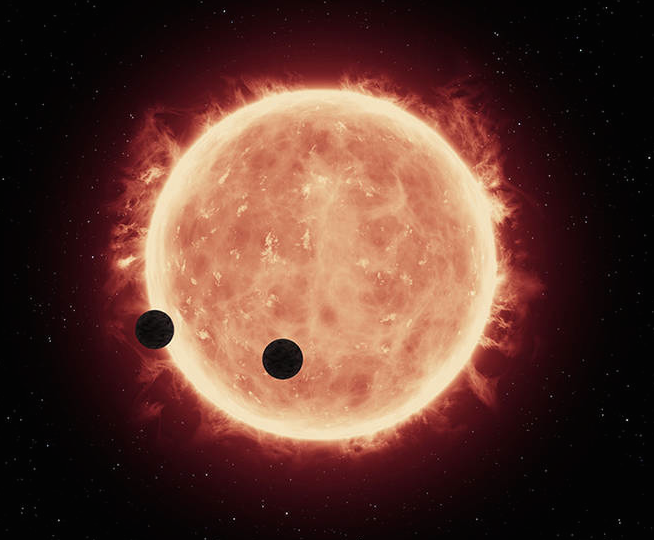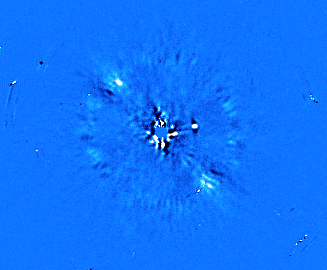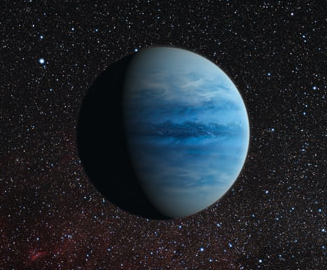
An artist’s impression of two planets in the Trappist-1 system. Credits: NASA/ ESA/ STScI/ J. de Wit (MIT)

An image of a possible planet orbiting a nearby star. Credit: ESO/E. Matthews

An artist’s impression of the cloudy planet HD189733b. Credits: NASA, ESA, and D. Sing (University of Exeter)
Exoplanets
What is an exoplanet?
An exoplanet is a planet that orbits any star other than the Sun – and over 3000 of them have now been discovered. Scientists nowadays are not only able to find these amazing planetary systems, but can even use instruments like the Hubble Space Telescope to start to understand the weather on these alien worlds! At Exeter we have world leading researchers in finding, characterising and modelling these bizarre worlds.
Find out more
Watch Prof. David Sing and Dr Nathan Mayne explain what an exoplanet is in the video below.
How do we discover exoplanets?
There are several different methods for detecting planets around other stars. The most common is to observe a small dip in the brightness of the host star as the planets pass between the star and the planet. Here at Exeter we also have researchers working to directly photograph planets around other stars with some of the largest telescopes in the world.
Find out more
Watch Professor David Sing and Dr Nathan Mayne discussing how astronomers detect exoplanets:
Exoplanet characterisation
As well as attempting to detect new exoplanets, researchers in Exeter are aiming to understand the composition, structure and even the weather on known exoplanets. This can be done by observing the planet at different colours, or wavelengths, and comparing the measurements to sophisticated computer models.
Several members of the Exeter Astrophysics department are working to develop and improve these models that can help us understand what these planets are made of, their magnetic field and even the weather they might be experiencing!
Find out more
- Read about David Sing’s Nature paper which characterised ten ‘hot Jupiter’ exoplanets
- Video: How can we use models to explore exoplanets? - Researchers at the University of Exeter are collaborating with the Met Office to model and understand the weather on distant planets.
Dr. Nathan Mayne and Prof. David Sing explain the various properties of exoplanets that we can observe:
Exoplanet missions
Researchers here in Exeter use various high class telescopes around the world and in space. Over the last year we have performed observations with facilities such as the Very Large Telescopes in Chile, the Keck Telescope in Hawaii and even the Hubble Space Telescope, all to help further our understanding of alien worlds.
We are also involved in implementing new instruments: Tim Naylor is on the instrument team for the Terra Hunting Experiment, which will search for Earth-like planets via the Radial Velocity method, while Stefan Kraus is project scientist for the proposed Planet Formation Imager instrument.
Find out more
